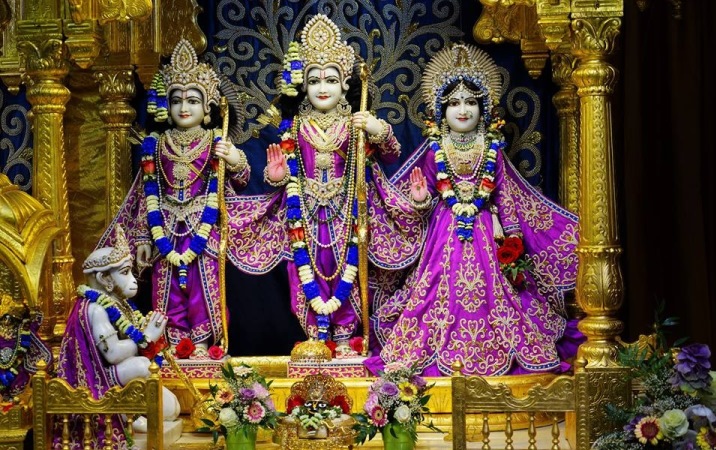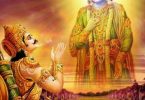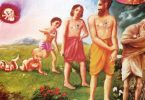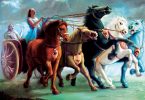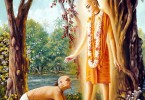Question: Rāma in the Mahā-mantra refers to both Lord Rāma and to Balarāma. However, Balarāma once appeared as Lakṣmaṇa also. So, are we to understand that Lord Rāma is Balarāma? If so, how is Lakṣmaṇa also Balarāma? And where is Kṛṣṇa in this picture? Is Mother Sītā Kṛṣṇa’s eternal consort, or is she Balarāma’s eternal consort?
Answer by Romapada Swami:
First of all, Lord Rāma is a manifestation of Krsna, not Balarāma. What you declared about the name “Rāma” within the Mahā-mantra is almost correct: Rāma in the Mahā-mantra can refer to either Lord Rāma or to Balarāma.
Next: The consorts of the Supreme Lord are not interchangeable. Sītā is the consort of Rāma. Revati is the consort of Balarāma. Rādhā is the consort of Kṛṣṇa. Lakṣmaṇa’s consort is Ūrmilā, Sītā’s sister. We don’t mix them up.
Balarāma is one entity, variously manifested in different avatar forms, such as Lakṣmaṇa and Nityānānda Rāma.
Primarily, because we are Kṛṣṇa bhaktas, when we recite the Mahā-mantra, we think of Balarāma. However, if someone is a Rāma bhakta, they will think of Rāmacandra when reciting the Mahā-mantra. And that is just fine.
But the word “Rama” in the Mahā-mantra refers to Rāmacandra, not to Lakṣmaṇa.
Question: When we hear the word Rāma in Rāmāyaṇa, does it refer to Lakṣmaṇa?
Answer by Romapada Swami:
No, it refers to Rāmacandra.

